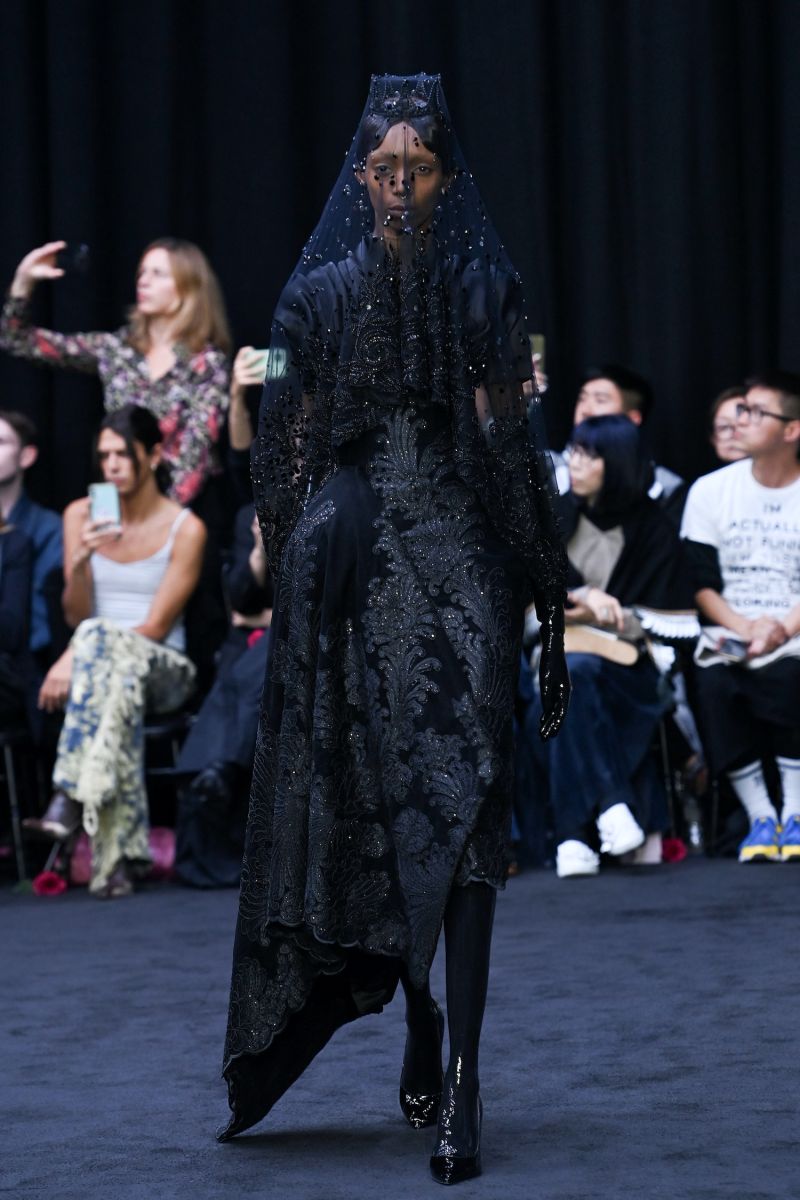Justine Picardie: 'Chanel’s little black dress became a symbol of women’s freedom'
Both fun and funereal, the evolution of a wardrobe staple is celebrated in National Museum Of Scotland’s big summer exhibition. We ask a number of leading fashion voices what the little black dress means to them

Fashion trends, much like the seasons they follow, perpetually fade in and out. Few garments manage to weather the storms of incoming colours, cuts and patterns for even a matter of months, never mind years or decades. But one piece that has defiantly succeeded in standing this test of time is the little black dress.
Attributed to Coco Chanel in the early 1900s, the first iterations of this item were designed in WWI’s aftermath, a social backdrop that Justine Picardie (fashion historian and author of Coco Chanel: The Legend And The Life) believes is fundamental to understanding this garment’s creation. ‘If you think of how many people were grieving after the First World War, and then there was the influenza epidemic that killed enormous numbers,’ says Picardie. ‘So black was associated at that point with the colour of mourning, of bereavement. People wore black to funerals and also in the aftermath.’

Chanel herself had suffered a major bereavement: her lover, a British captain called Arthur Capel, who’d been ‘the great love of her life’, explains Picardie. ‘He survived his military service but then died in a car crash at the end of 1919 in the South Of France. Chanel wore black as a symbol of mourning. As she emerged from that terrible grief, which was a really defining episode in her own life, she then starts to use black in a really radical way. Now it’s absolutely integral to the language of the Chanel brand.’
Using the colour black wasn’t the only ground-breaking element of Chanel’s early designs. After a trip to Venice where she had to negotiate getting on and off a gondola, Chanel designed (and wore) trousers, which until this point were reserved for men. ‘When half of the male population die, and females enter the workforce for the first time, they’re not going to work in a full-length Victorian dress, right? It’s not possible,’ adds Lynne Coleman, Scottish fashion writer and author of How Scotland Dressed The World. ‘What Coco Chanel does is absolutely seizes that moment and knows that she can put women in trousers. It was a way of modernising women’s wardrobes. Men didn’t sit with corsets and long skirts for eight hours making bullets or sewing frontline uniforms. So this was a way of pulling clothes into what’s happening in society.’

This evolving idea of the ‘modern woman’ remained at the forefront of people’s minds, with suffrage movements building across France and Britain. ‘Chanel has her own company in her name, yet she’s still not allowed to vote,’ Picardie notes. ‘That tells you how far from emancipation women were. But nevertheless, they were making gains. And Chanel’s little black dress became a symbol of women’s freedom and independence in the 1920s. It’s as if she makes a decision that black is going to become symbolic of strength as well as grief.’
1926 is considered a significant moment in the conception of the little black dress, a notion Picardie partially disputes. ‘Chanel had actually designed little black dresses before then,’ she notes. ‘But it became famous when American Vogue published a Chanel sketch in 1926, proclaiming it the “Ford dress”. That reference came at a time when Ford motor cars were becoming very popular right across America. It was a democratisation, I suppose; what Ford represented in cars was being mirrored in this idea that a little black dress could be something everybody could own.’ Compounded by post-war textile rations and financial struggles faced by many in the Great Depression, the little black dress, whether for its elegance, block colour or simplicity, was embraced by all. But reimaginings of its design are most likely responsible for a continual resurgence and ability to transcend eras.
(1).JPG)
Post WWII, Christian Dior updated the silhouette with a more cinched waist and fuller skirt; the 60s gave way to Oscar-winning costume designer Edith Head’s iconic Givenchy dress worn by Audrey Hepburn in Breakfast At Tiffany’s; in the 90s, Princess Diana donned the infamous revenge dress, and Posh Spice came along with her short spaghetti-strapped number; even the viral Fleabag SilkFred jumpsuit (costing a reasonable £50) could be seen as yet another take.
Vogue’s 1926 article claimed ‘the LBD was “a uniform for people of taste”,’ quotes Scottish-Botswanian fashion model Maungo Pelekekae. ‘To me, that means the colour being flattering and also just easy to dress, to add on top of it. We can all go to a party: I’m wearing a little black dress; you’re wearing a little black dress. We all look elegant, and you can’t even tell that mine is H&M and yours is Chanel. Some people may even think mine is more expensive, just by the way that I’ve layered, accessorised and styled my hair. It’s a uniform for all tastes, all aesthetics; whether you consider yourself middle, upper or lower class, it doesn’t matter.’

‘It’s that universal uniform of a woman who knows exactly what she’s doing, for whatever occasion,’ adds Coleman. ‘Maybe she’s burying her father; maybe she’s going for the job interview; maybe she’s going on a date. There’s a little black dress that has its name all over that.’
Despite being in the public consciousness for nearly a century, the little black dress still holds immense power for both top fashion houses and everyday shoppers. ‘There’s that famous Chanel quote that says “fashion fades, style is forever”,’ recalls Picardie. ‘The exact French translation is “fashion passes, style is eternal”. I think the little black dress symbolises that.’
Beyond The Little Black Dress, National Museum Of Scotland, Edinburgh, Saturday 1 July–Sunday 29 October.